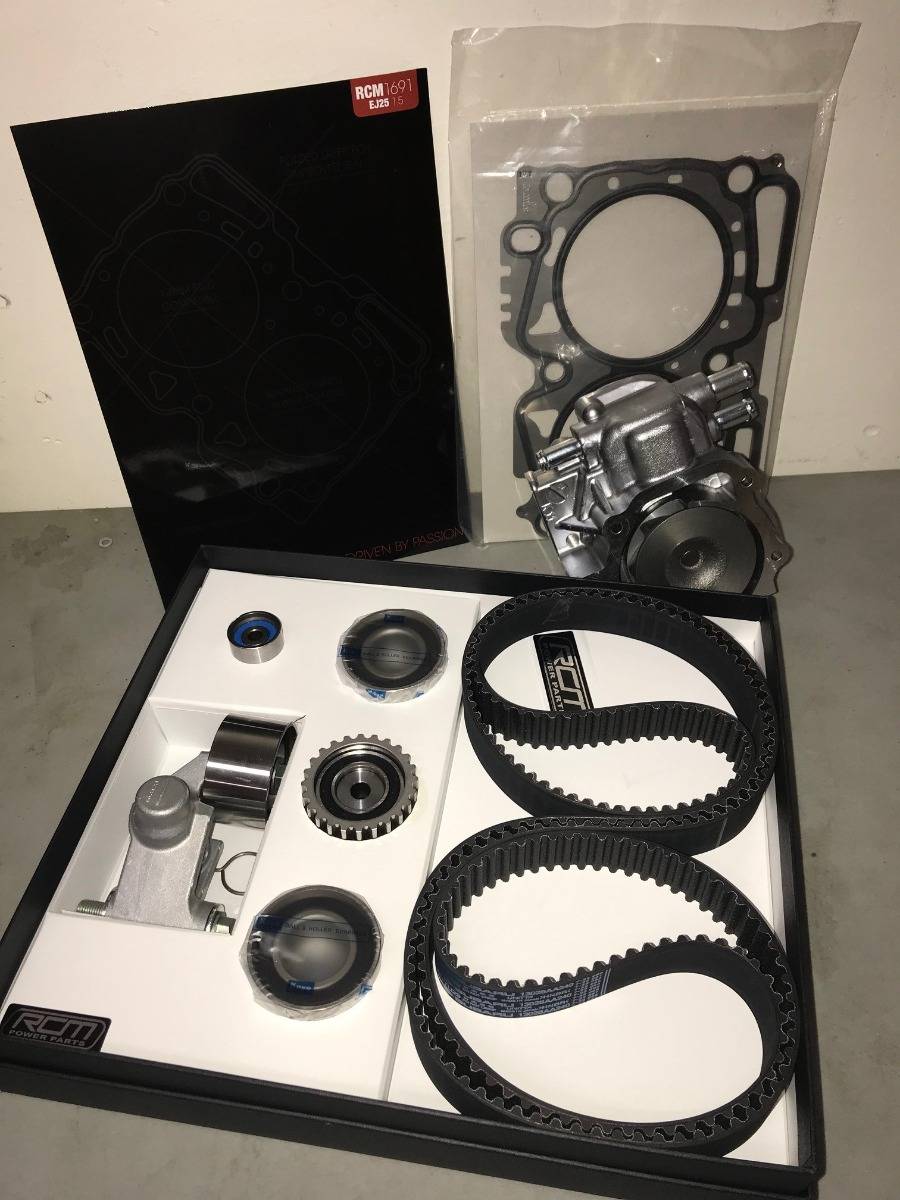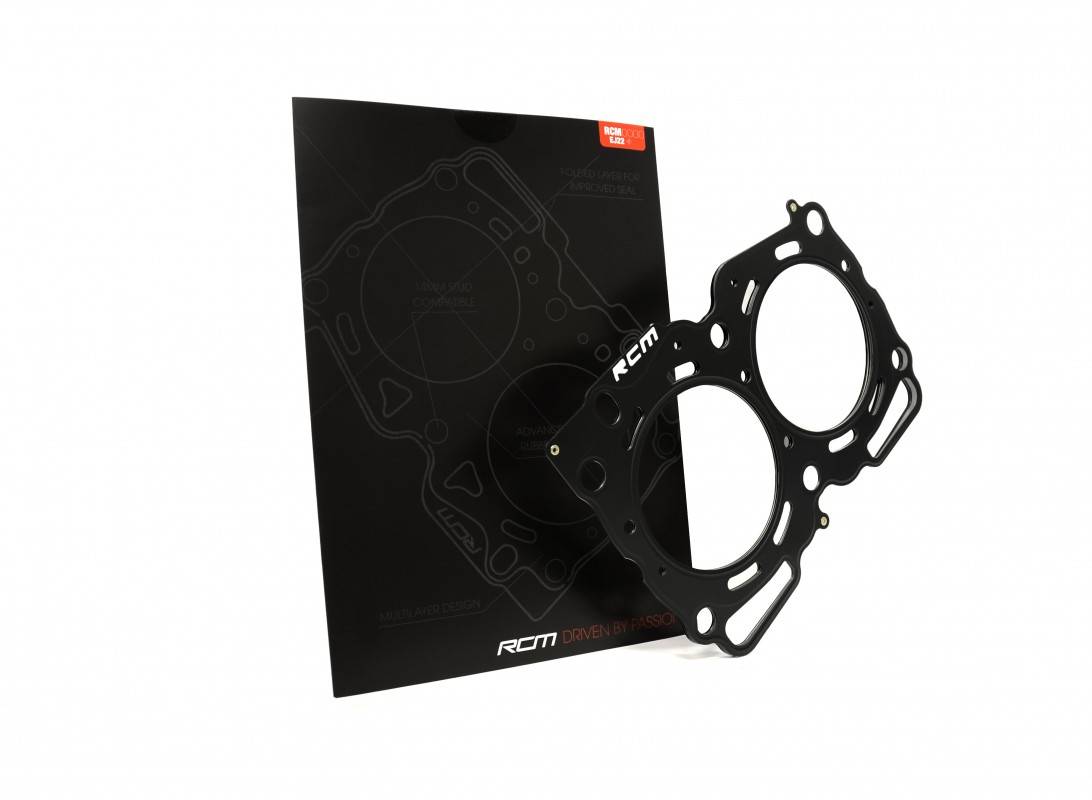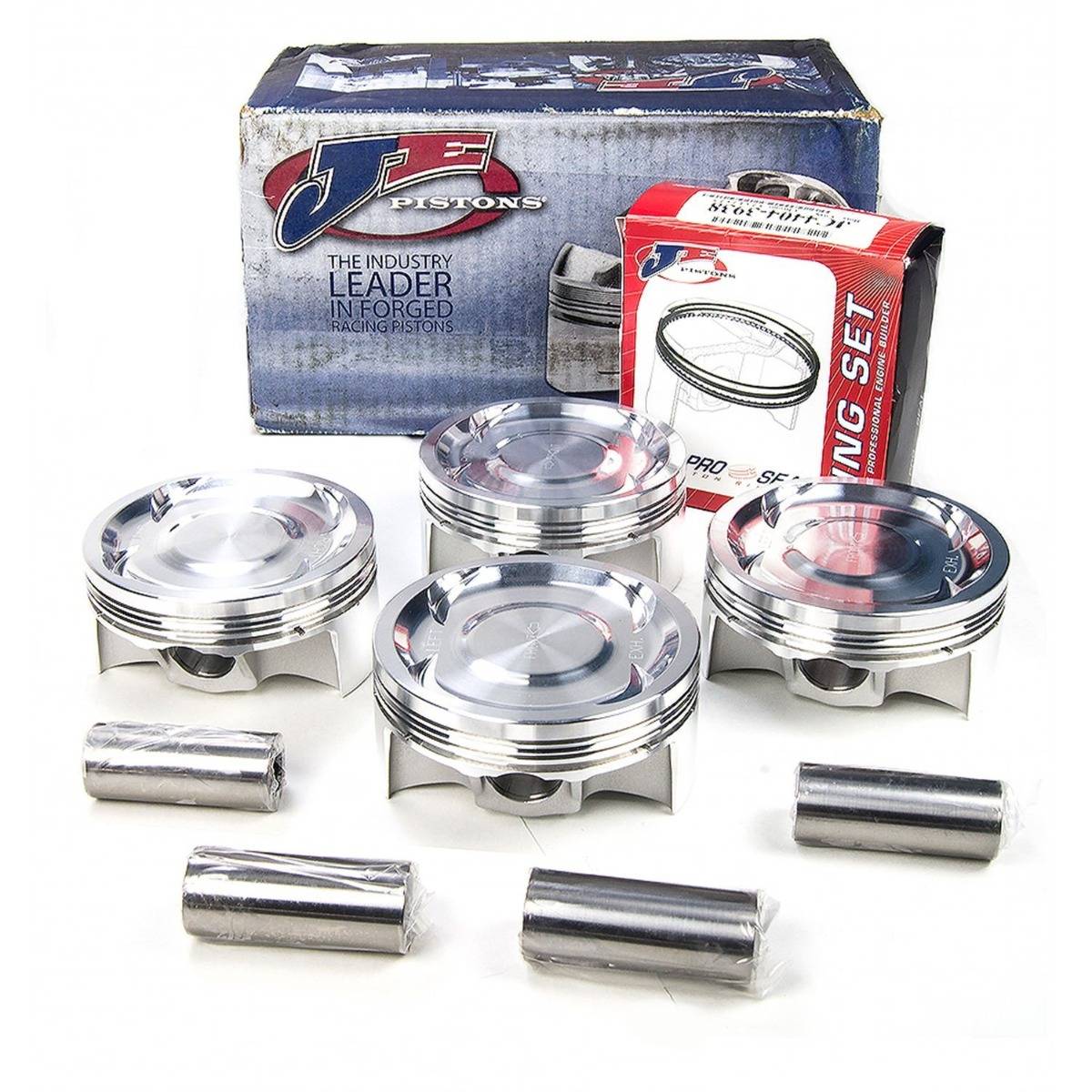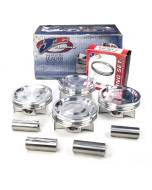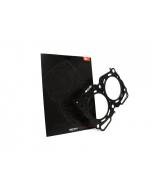We use cookies to make your experience better. To comply with the new e-Privacy directive, we need to ask for your consent to set the cookies. Learn more.
What is a Subaru Hybrid Swap?

From 2002 to 2005, the Subaru WRX came with a 2.0 liter engine, but when the STI became available in 2004 (as with the Forester XT and Legacy GT) they came with a 2.5 liter engine. WRX owners immediately wanted to see if they could install a 2.5 liter EJ257 or 2.5 liter EJ255 block from one of these other cars into their 2.0 liter WRX.
It turns out that this is fairly simple to do, and that is what is now commonly referred to as a WRX Hybrid Swap Kit, putting 2.0 liter heads on a 2.5 liter block.
When doing this conversion, there are two issues that come up. The first is that the combustion volume of the 2.0 liter heads is much less than the 2.5 liter heads, and this leads to a pretty significant bump in compression. The second is that because the bore of 2.5 liter block is much larger than the 2.0 liter block (99.5mm vs. 92.0mm), the pistons don't match up to the cylinder head properly, giving you a less than optimal quench area and combustion chamber shape.
If you are looking to maximize the power potential and reliability of a hybrid swap, you want to address these two issues, and through the years, there are now 3 solid options to chose from.
The first, and simplest option is to use a thicker 2.5 liter head gasket. Companies like Roger Clark Motorsport have come out with a head gasket that is twice as this as stock (1.5mm) and this extra thickness corrects for the bump in compression that you get if you were to use a stock thickness head gasket. But this does not solve the combustion chamber shape issue. This option is ideal for power goals of 350 whp or less, or a more stock build. At higher power levels, and specifically at higher boost levels (say 20 psi or more) the doubled surface area of the gasket can be a liability.
The second option is to run JE Hybrid Pistons. There are forged pistons made by JE for this exact configuration. They have a deeper dish to correct for the compression issues that the 2.0 liter heads introduce, and this also allows you to use a stock thickness head gasket. They also have their quench area designed to match up to the 2.0 liter heads, so this also fixes the chamber shape too.
The only downside here ( and it is a small one) is that they are forged pistons, and if the power goal for the build are low enough that forged pistons aren't required, this may be less than ideal because of the shorter life expectancy of an engine with forged pistons. You would also want to account for the additional cost of either building a shortblock with forged pistons, or installing the forged pistons into an existing block.
The last option that is available is to work with a machine shop that can open up the combustion chambers on the 2.0 liter heads to match the shape and volume of the 2.5 liter heads. There are a number of shops that do this now, for instance ASF Machine now has a CNC program to do this, which helps to keep cost down, and helps to consistently match the combustion chamber shape. With this option, you would be able to run a stock thickness head gasket, and a OEM STI block with OEM pistons is an option.
The one thing that you have to be aware of when machining EJ20 heads, or if you are re-using your EJ20 heads for this swap for that matter, is that they are prone to cracking. There is a known issue on older or higher-mileage EJ20 heads where cracks can form starting at the spark plug hole, radiating out to the valves. If a head casting has, or is starting to crack, you should not machine them, and ideally, they should not be re-used.
If you have a single head with cracks, it is usually worth looking at any of these 3 options that works best for your goal. But if both heads are cracked, you may want to look at replacing the EJ20 heads with EJ25 heads, and doing a full 2.5 liter swap into your 2.0 liter WRX, but that is a topic for another blog entry.
We have put together a kit that is made up of the common parts needed to do a hybrid swap, so that may be helpful to you as well.
Hopefully this helps, and if you have any other questions, please don't hesitate to reach out!
-Jon Cooley

